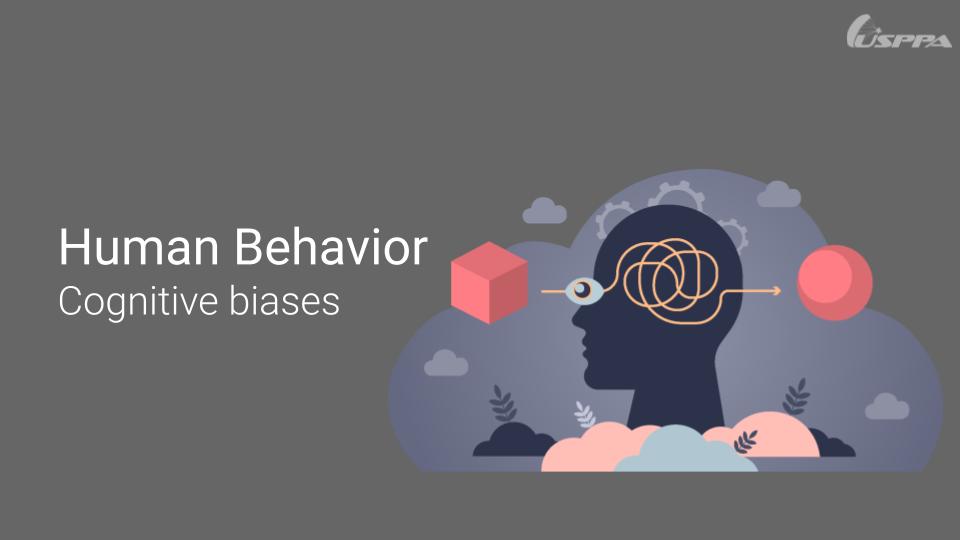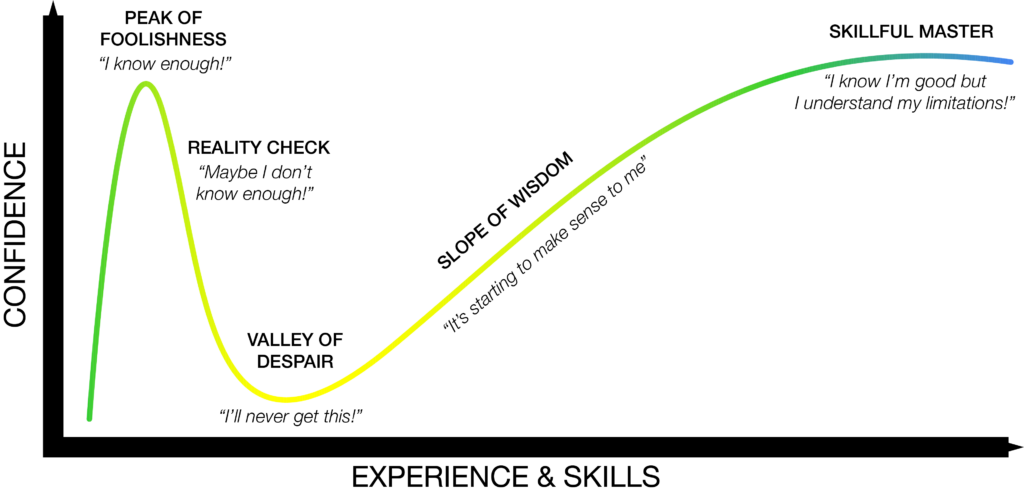Cognitive biases

What is cognitive bias?
“Cognitive bias” refers to a wide variety of unintended mental tendencies that impact reasoning, behavior, and decision-making skills.
The human brain is incredibly powerful and complex. It’s capable of processing crazy amounts of information. To simplify things, the brain relies on mental shortcuts (heuristics) to help speed up our ability to make decisions. These shortcuts save time and energy but they also lead to cognitive biases.
EVERYONE HAS COGNITIVE BIASES!
Fun fact: If you believe you are less affected by cognitive biases than other people…that is a cognitive bias. It’s called the bias blind spot, a tricky little bias that makes it easy to detect biases in others but difficult to see them in yourself.
Biases affect decision-making skills.
Here are some common biases to be aware of:
The Confirmation Bias
This causes a person to favor information that reinforces what they already believe and disregard any information that goes against what they believe.
Example of how it may affect instructors:
Instructors may be blinded to newer or more effective teaching methods because they believe they already teach the best way possible. Also, instructors may refrain from using newer and safer gear because they believe nothing is better than what they are already using.
Example of how it may affect students:
Students may struggle to accept gear advice from their instructor if they already believe a certain brand or wing model is the best choice for them.
The Anchoring Bias
This is the tendency to rely too heavily on information that was received early on in the decision-making process. This bias can skew expectations.
Example of how it may affect instructors:
New instructors are more likely to rely on using the same teaching methods that their instructor used for them instead of developing their own unique approach for teaching.
Example of how it may affect students:
Students that encounter PPG-related information on Youtube or social media before training may rely too heavily on the information or advice they received from that exposure.
The Actor-Observer Bias
This is the tendency for people to attribute their own behaviors to external causes while attributing other people’s behaviors to internal causes. For example, when YOU do something rude, it’s because you were in a bad mood, but if someone else does something rude, it’s because they are mean.
The Self-Serving Bias
This is the tendency to blame external forces when bad things happen and give yourself credit when good things happen. For example, a PPG pilot that fails a launch may attribute it to “having an off day” but that same pilot watches someone else fail a launch, and assumes it’s because that other pilot lacks skills.
The Dunning-Kruger Effect
If there’s one bias to understand, it’s this one! The Dunning-Kruger effect occurs when a person’s lack of knowledge and/or skills in a particular area causes them to overestimate their competence. This causes the person to believe that they are smarter and more capable than they really are.
Why does it happen? As we acquire new knowledge, we recognize that we know a lot more than we knew before, and thus, we make the mistake of thinking we must have all the knowledge we need.
Think of the teenager that thinks they know as much as an adult.
It often takes a reality check to go from thinking we know enough to realizing that maybe we don’t. Reality checks can be extremely dangerous in powered paragliding since they often entail damage, injury, or even death.

How do we avoid the Dunning-Kruger Effect?
Simply knowing about it can help you mitigate its effects.
- Question what you know. If you think you’re exceptional at something, you likely still have a lot of learning to do.
- Ask for feedback. Honest feedback is valuable to find the boundaries of your own competence.
- Become a life-long learner. Life-long learners view learning as a sign of strength, not a weakness.
Instructors should also help their students to understand the risks of this dangerous cognitive bias.
